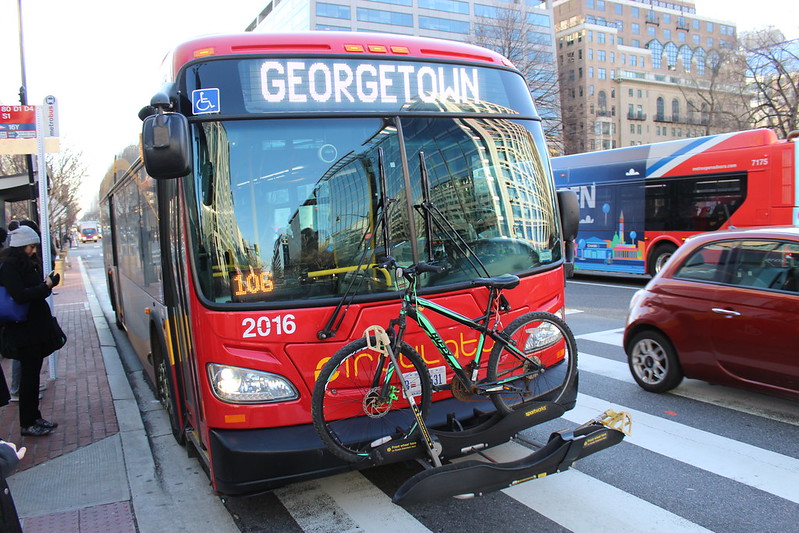March 4, 2020
Montgomery County Council
Council Office Building
100 Maryland Ave
Rockville, MD 20850
Re: Follow-up on bus rapid transit projects in the FY 21 Capital Budget and FY 21-26 CIP
Dear Council President Katz and County Councilmembers:
The undersigned wrote a letter on February 26, 2020 requesting amendments to the FY 21 Capital Budget and FY 21-26 Capital Improvements Program regarding bus rapid transit (BRT). Since then, we have had discussions with decision makers and county officials that have clarified information and raised some important points for consideration.
The basis for our original letter was to find and recommend a path toward near-term transit service improvements due to the constrained fiscal environment. We were concerned about planning for new BRT routes like MD-355 without having a funding plan for construction, and sought to identify projects which we thought could be brought online sooner if we reallocated some of the funding from planning and design to design and construction of particular projects like having Route 29 BRT dedicated lanes in the southern section and the second entrance to the White Flint Metro Station.
We wish to work with the county to best prioritize existing funding and to support all efforts to identify additional funding sources for transit. Therefore, we would like to share revised recommendations:
Route 29 BRT needs additional dedicated lanes to be successful from the outset: The first line of the planned countywide BRT network is set to open this May without the fully dedicated right of way that is necessary for bus rapid transit to truly be rapid. We believe it’s important to get the first BRT line right — with the highest quality of service to show county residents what BRT can do, and why the rest of the network must be funded and built. We urge the Council to expedite review of the “Smoot-Emerson” proposal study for a reversible dedicated BRT lane south of Tech Road, to inquire with MCDOT the status of their follow-up activities, and to seek a defined timeline from MCDOT. We recommend that this dedicated lane be fully funded for design and construction.
The BRT network needs a comprehensive financing plan: With a stagnant capital budget, it is unlikely the county will find the resources it needs for the 81-mile BRT network under current funding structures. We have been briefed by Director Conklin about efforts to develop a funding approach for the 355 corridor, and applaud those efforts, but ask for transparency in how the county will address the funding needs for other corridors. Financing may be different depending on the corridor, but it remains vital that as we move forward with the network’s design, we also make progress towards financing its construction. Director Conklin’s updates to you on financing plans will be extremely helpful.
We should expeditiously implement better bus service: We reiterate our support for Ride On extRa service along northern 355 and Veirs Mill Road, as well as a system-wide redesign and upgrade of Ride On. Adding express bus service prior to BRT construction has been a stated priority of MCDOT and proven beneficial to a number of communities. Near term bus service improvements that result in increased ridership will help build support for additional investments. In the case of Veirs Mill Road, if the proposed system of queue jumps and other “BRT-light” improvements can be put in place faster than Ride On extRa, then let’s do so.
The White Flint second Metro entrance provides regional, not just local benefits: We support the northern White Flint Metro entrance, because it shortens walking distances, supports more rapid redevelopment, and provides improved access to long-time existing residents in nearby apartments. The northern entrance can spur much-needed economic development and support Vision Zero objectives. Investments like this that enhance transit-oriented development and make it more likely that people will use Metro represent a regional transportation solution. If it is now possible that WMATA has the capital funding to help pay for the second entrance, that is terrific, but we assume it will still require some level of matching funds from the county.
We wish to make clear that we support construction of the full 81-mile BRT network and near-term design and construction funding for the top priorities of Route 29 fully dedicated lanes, Veirs Mill Road, 355, New Hampshire Avenue, and the North Bethesda Transitway, in addition to the second entrance to the White Flint Metro and the tunnel for the Capital Crescent Trail. However, we recognize the challenge of a stagnant capital budget and the need to prioritize. Therefore, we have made our best efforts to recommend priorities to the Council as outlined above.
We believe this Thursday’s briefing from Director Conklin to the T&E committee will offer critically helpful information to the public and Council. Based upon Director Conklin’s input and other information available to the Council we hope that you will find a way forward that best prioritizes projects and ensures the public sees near-term improvements in service.
Thank you for your consideration.
Sincerely,
Denisse Guitarra | Maryland Conservation Advocate | Audubon Naturalist Society
Jane Lyons | Maryland Advocacy Manager | Coalition for Smarter Growth
Walter Weiss | President | Montgomery County Faith Alliance for Climate Solutions
Michael DeLong | President | Montgomery County Young Democrats
Shruti Bhatnagar | Chair | Sierra Club, Montgomery County
Margaret Schoap | Organizer | Transit Alternatives to Mid-County Extended
CC: County Executive Marc Elrich, Department of Transportation Director Chris Conklin


